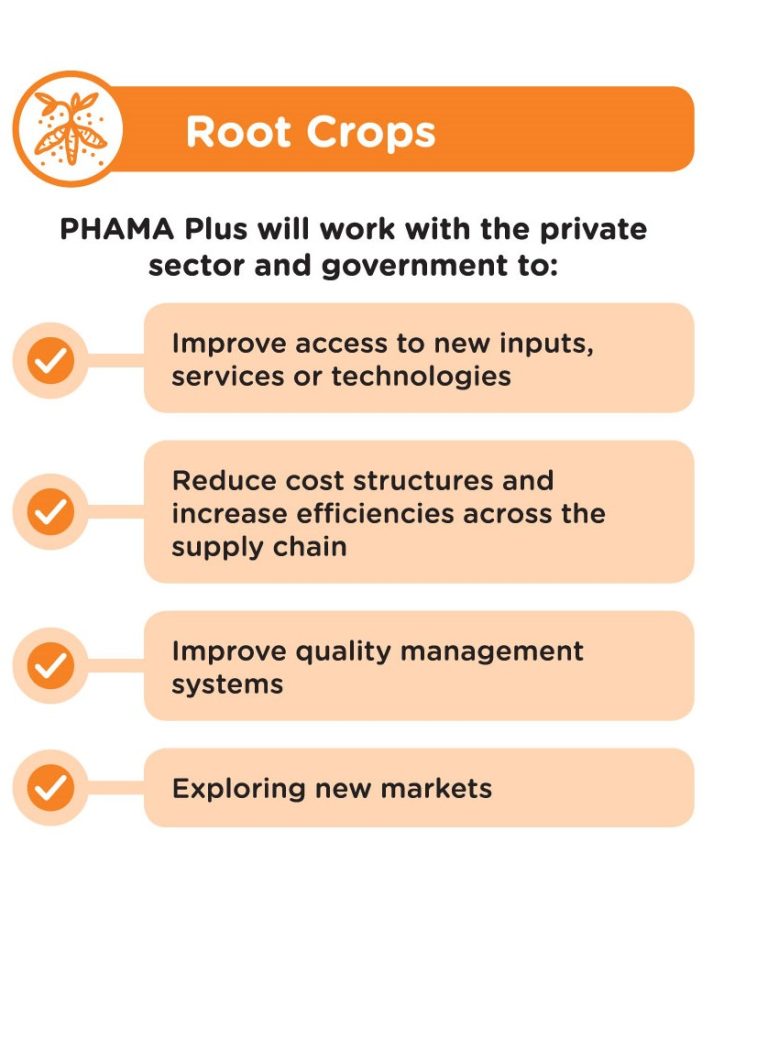PHAMA Plus’ work in the sector builds on the work undertaken in previous phases of PHAMA. This included a feasibility study and business plan for the proposed multi-purpose packing facility for Tonga, in which root crops will be processed; as well as upgrading the MAFF root crop processing facility; food safety training and an export development grant for the export of sweet yams.
Root crops are traded both in the domestic and the export markets. The majority of the root crop supply (about 60%) is traded in the domestic market while the remainder is exported. It is estimated that only about 40% of exports are traded through the formal sector. The remaining 60% are exported to Tongan communities, churches, friends and families abroad. This informal trade is aimed at providing food supplies for Tongan diaspora communities, where there is limited or no island style food available. Tonga supplies root crops to the New Zealand, Australian and USA markets in direct competition with Fiji and Samoa.
However, Tonga is currently the only significant supplier of yams in the Pacific and can further develop this market through value-adding opportunities. For all root crops Tonga has a sound competitive position due to a favorable growing environment, good transport infrastructure and lower shipping costs relative to Samoa and Fiji. There is opportunity to increase the formal export of root crops. The export demand for Tongan root crops is currently very high and discussions with exporters revealed that they are unable to meet demand. The total annual volume of root crops exported from Tonga is 4,000 –5,000 tonnes. Tonga could double its export figures (Table 1).Cassava has the highest market share in exports but there is steady demand for yam (Figure 1shows that the overall trend in root crop exports has been upwards over the past 12 years, with significant year-to-year fluctuations due to climatic factors.
The vision for the Tonga root crops sector is to increase export of root crops (to the formal market), and meet consistency and market quality specifications. PHAMA Plus supports exporters/processors to give timely information to producers on crop commercial potential and market requirements; improved productivity techniques and crop scheduling for producers to use to in order to meet export demands; producers/processors have access to efficiency gain tools and machineries, to reduce production cost, especially labour costs and offset the negative impact of the Seasonal Workers’ Program (SWP); exporters and processors have access to certified facilities to process and packaged increased supply of roots crops for export to formal market.

